The educational materials listed on this page are about Local and Regional Food Systems.
Local and regional food systems are ones that produce and distribute foods on a local scale rather than a national or international one. Food goes from farmer to table in fewer steps, by means of CSAs (Community-Supported Agriculture), local farmers’ markets, cooperatives, local food hubs or through commercial or institutional buyers, including schools, hospitals, grocery stores and restaurants. The goals of local food systems are improving the economic wellness of communities, increasing avenues to fresh local foods and creating viable markets for farmers and ranchers through value based supply chains and rural/urban integration. Local food systems also help sustainable communities prosper by strengthening the economic resilience of farmers and ranchers, via partnerships and social networks. Local farmers’ cooperatives provide farmers with the resources and scale of production needed to help each other tap lucrative value added food processing opportunities. Community supported agriculture, and farmers co-ops also help beginning farmers have a place to start through the support of the community.
More information on local food systems, including tips for land access, a topic of particular interest to beginning farmers, can be found in the topic brief Building Local and Regional Food Systems. This topic brief is an online collection of practical resources on business and marketing planning, distribution and aggregation, meat processing and food processing, and more. For example, find resources for people who want to build poultry processing facilities or explore small-scale meat packing. The guide Building a Sustainable Business can be of service to beginning farmers, with its approaches to starting a successful farming business in a local food system and writing business plans and marketing plans.
Showing 1-10 of 27 results
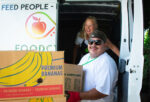
Food Loss and Waste
The United States is one of the world's largest producers of food, and yet the statistics around food waste are extreme: Food waste has been referred to as the "world's dumbest problem," but we can reverse it with both national and small-scale efforts alike. This page is dedicated to sharing the research and educational materials […]
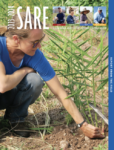
2023–2024 Report from the Field
SARE grants havehelped our viabilityas a business anddemonstrated thatsmall businessescan make a positiveimpact on theenvironment when wedevelop relationshipswith each other forthe benefit of all. Jeanine SeabrookGlass Rooster Cannery Letter from the Director I have always appreciated the value of long-term research as well as the long-term impact of both applied and basic research. The core […]
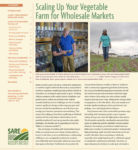
Scaling Up Your Vegetable Farm for Wholesale Markets
For direct market farmers, expanding your operation to capture local and regional wholesale markets can represent an opportunity. But such a shift brings with it many changes to how you run your farm because the expectations that wholesale buyers have is much different than your direct market customers. Scaling Up Your Vegetable Farm for Wholesale […]
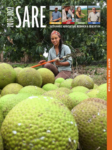
2021–2022 Report from the Field
Report from the Field features 12 stories from around the country of recent SARE grantees who are finding new ways to improve the sustainability of U.S. agriculture. The report also summarizes our total investment in research and education projects since 1988.

Building a Local Food Movement
Over the last few decades, agriculture in western North Carolina has transformed from a reliance on tobacco to a diversified, self-sustaining industry intertwined with local communities and economies. In this video, learn how one organization has worked alongside local farmers and communities to support this transformation.

Bringing Independent Farmers into the Marketplace
Small- and mid-sized farms are increasingly turning to supermarkets as a means to earn more for their products and to participate in local economies. In this video, Diana Endicott discusses how she decided to take this route 15 years ago when it was less typical, and how her efforts have resulted in a 100-member co-op today that sells to 30 stores in the Kansas City area.
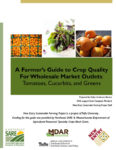
A Farmer's Guide to Crop Quality for Wholesale Outlets
A simple guide to crop quality focused on tomatoes, cucurbits and greens, with photos of good and poor crop quality as well as best practices for post-harvest handling.
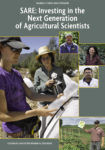
Investing in the Next Generation of Agricultural Scientists
Sustainable solutions to today's agricultural challenges arise when scientists, educators and producers work together to test theories in real-world, on-farm situations. For this approach itself to be sustainable, there must be opportunities for the next generation of agricultural scientists to use collaborative, applied research to address the real-world needs of farmers and ranchers. The SARE Graduate Student grant program is one such opportunity—since 2000, the program has supported the work of 600 master's and Ph.D. students.
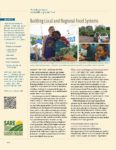
Farm to Table: Building Local and Regional Food Systems
More and more, farmers, ranchers, ag professionals, community organizers and others are striving to reconfigure the nation's food system so more value stays in food-producing communities.
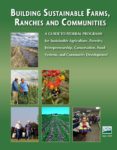
Building Sustainable Farms, Ranches and Communities
This guide lists funding opportunities offered by federal programs, and is indispensable for anyone seeking government help to foster their innovative enterprise in forestry and agriculture.